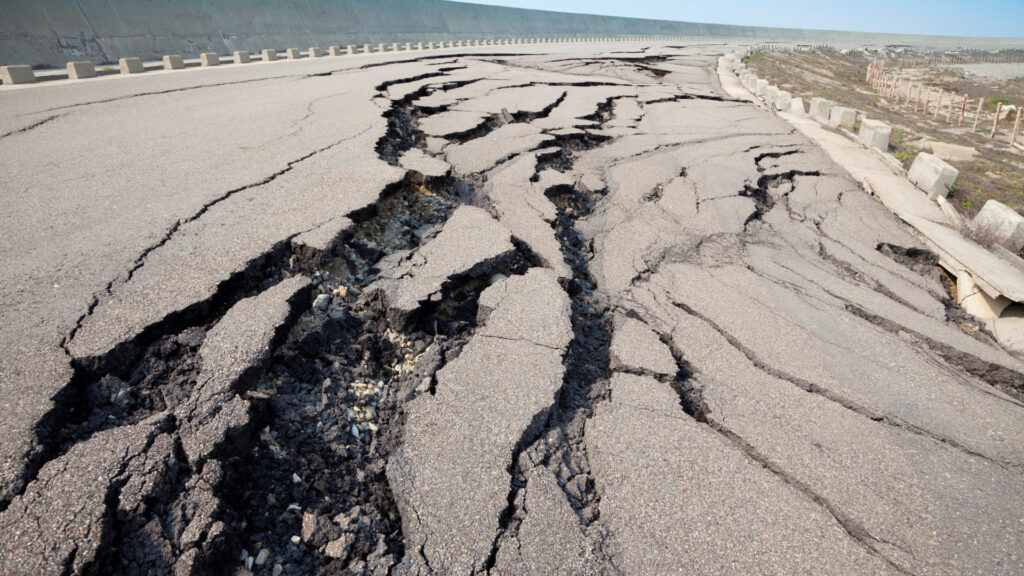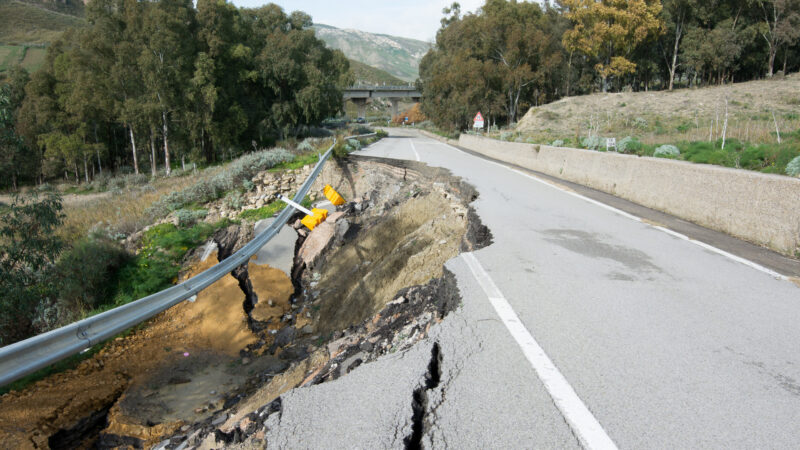Table of Contents Show
We live in a world where natural disasters frequently happen. From tornadoes to hurricanes to earthquakes, no place on Earth is safe from nature’s power. If you don’t live in a place where earthquakes occur, you might have never paid attention to the earthquake levels.
But since the deadly 7.8 magnitude earthquake hit Turkey and Syria in February 2023, you might have wondered what these earthquake levels mean.
Let’s take a closer look so you can understand these magnitudes and the potential damage and destruction caused by earthquakes.
What Is an Earthquake?
An earthquake is the intense shaking of the Earth’s surface. The world is put together by constantly shifting puzzle pieces called tectonic plates.
This movement can cause stress on the Earth’s crust, which then causes cracks called faults. When the crust moves at these faults, it causes an earthquake.
Where Do Earthquakes Happen?
Earthquakes happen all over the world. But they specifically occur along faults near the edge of tectonic plates. There are oceanic plates and continental plates.
Because of the movement of the mantle, which lies deep inside the earth, these plates either move apart or run into each other whether by bumping or sliding past or underneath each other. This movement causes earthquakes that have different magnitude levels.
Locations along these faults have higher risks of earthquakes than locations that don’t lie near these lines.
For example, the coastline of California lies along the edge of the southwestern part of the North American plate. When this tectonic plate slides past the Pacific plate, an earthquake occurs.

Why Do Earthquakes Happen?
When underground rock breaks, a sudden release of energy causes seismic waves. These waves make the ground shake.
The space underground where the break occurred is called the focus of the earthquake. Directly above the focus at the surface level is the epicenter of the quake.
What Is the Richter Scale?
The Richter Scale was created by seismologists Charles Richter and Beno Gutenberg in 1935. It measures the magnitude of an earthquake. Richter and Gutenberg improved their original scale several times, using seismographs and peak wave amplitudes to identify earthquake energies.
Over the last few decades, the Richter Scale was replaced with a more accurate measuring scale called the moment magnitude scale, developed in the late 1970s.
Instead of using peak wave amplitudes, it calculates earthquake magnitude by taking the displacement of the fault across its entire surface multiplied by the force used to move the fault.
What Are the Different Earthquake Levels?
Earthquake levels allow seismologists to develop their understanding of earthquakes and their causes. They help assess risk and how potential earthquakes could affect lives.
Most earthquakes are very small tremors. They measure less than 1.0 to 2.9 on the Richter Scale, and most people generally don’t feel them. Minor earthquakes range between 3.0 to 3.9 on the Richter Scale. People may feel the movement, but it’ll have little to no damage.
Damage starts to occur at earthquake levels of 4.0 to 4.9. Less than 2,000 earthquakes measure 5.0 to 5.9 each year. They’re rated as moderate and lead to damage of weak structures.
Strong earthquakes measure 6.0 to 6.9 on the Richter Scale, and major ones measure 7.0 to 7.9. They produce extensive damage and often lead to loss of life.
Any earthquake measuring 8.0 or higher on the Richter Scale is the most severe and leads to the most casualties. Each year about two or three earthquakes of this size occur somewhere in the world.

What Is the Largest Earthquake Ever Recorded In History?
The highest earthquake level ever recorded was 9.5 on May 22, 1960. It occurred off the coast of Chile and generated a tsunami that caused destruction as far away as Japan and the Phillippines. An estimated 2 million people lost their homes, with a death toll above 1,600, and the economic damage totaled $550 million.
However, this wasn’t the deadliest earthquake ever recorded. According to ancient annals, an earthquake in 1556 killed over 830,000 people in China.
In more recent years, the earthquake off the coast of Sumatra, Indonesia, in 2004 was the second strongest ever recorded at 9.1 to 9.3 magnitude. It killed an estimated 230,000 people. The resulting tsunami devastated much of the Indian Ocean coastline.
Keep in Mind: Have you driven on the most dangerous road yet? Click the link to find out!
What to Do During an Earthquake
If you live in an area prone to earthquakes, you probably had earthquake drills in grade school. You probably have a “safe room” in your home where everyone should go in the event of an earthquake.
When an earthquake occurs, always stay where you are. You have a lower chance of injury if you take cover where you are instead. If you’re inside, stay inside. If you’re outside, stay outside.
If you’re inside, stay away from windows and outside doors and crawl under a heavy piece of furniture. If you’re outside, stay away from power lines and buildings. You don’t want anything to fall on top of you. If you’re driving, stop the car and remain inside until the earthquake is over.
Most injuries happen from falling or flying objects or by running and falling down during the shaking.
What to Do After an Earthquake
What you do after an earthquake can be just as important. Although most earthquake levels don’t cause damage, always check to see if anyone needs first aid. Then check water, gas, and electric lines for damage.
Turn on the radio and listen for updates. Be ready for aftershocks and stay away from damaged areas. Also, stay away from beaches since tsunamis can occur after an earthquake.

Where Do Most Earthquakes Happen in the US?
Because Alaska and California lie on a major fault, more earthquakes occur in these two states than in any other state in the country.
About 81% of the world’s largest earthquakes occur in the “Ring of Fire” along the Pacific Rim. However, California usually sustains more damage because of the higher population and amount of structures.
Keep in Mind: Driving in fog is not ideal, but if you have to, You Should Always Do This!
Understand Earthquake Levels and Stay Safe When Disaster Strikes
Earthquakes happen all over the world. But earthquake levels are generally higher in certain parts of the world where tectonic plates rub against one another.
By understanding the earthquake levels where you live, you can properly prepare and know how to respond when an earthquake occurs.
And know that an earthquake many miles away can send waves even if you are not in an earthquake zone. So knowing these important tips can help save lives no matter where you live.
Have you ever experienced a major earthquake?






